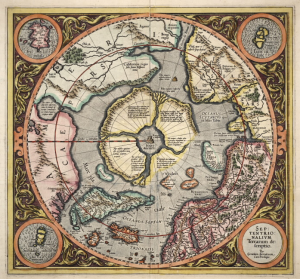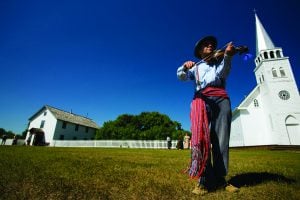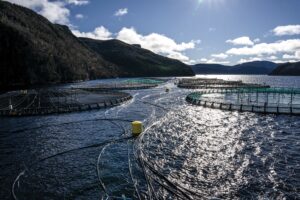Clarkson’s love for the Far North had raised the profile of this increasingly vital cap of the Canadian land base. It was a story of great interest to me, as well, as I had become so deeply involved with the Cree of James Bay and their battles with the federal and provincial governments of the day. This was a chance to see much more of the North than I had so far visited.
This trip was seen as a last hurrah for Clarkson, who at times had seemed tired as her extra year came to a close. Little wonder—a few weeks following her return from the Far North she was admitted to hospital in Toronto and fitted with a pacemaker.
Travelling in a military Twin Otter, the small group—I was the only journalist along—visited Iqaluit, the capital of Nunavut, as well as the far-flung communities of Pangnirtung, Tanquary Fiord, Pond Inlet, Resolute Bay and Grise Fiord. There were also stopovers at the research station at Eureka and the military base at Alert, the northernmost permanently inhabited settlement in the world. Some 60 people, the vast majority of them in the Canadian Armed Forces, live at the base on Ellesmere Island north of the 80-second parallel, some eight hundred kilometres from the North Pole.
It was a spectacular week to be there. Thanks to the 24- hour sunlight of the summer solstice, I watched youngsters playing golf in “Pang” well after midnight, their makeshift course with just a single hole laid out along village streets and the rugged coastline. How appropriate, then, that the visitor centre at Pangnirtung contains an ancient club, a very rusty niblick, that had been found in an old Scottish whaling camp.
At Alert, Clarkson and Saul led a work brigade in constructing a rock cairn at the far end of the runway, a point where Canada ends— or begins, depending on which direction you might be travelling. It was a remarkable spot for the cairn, with mountain ranges barely within sight and, across the choppy ice, Russia sitting somewhere beyond the far curve of the horizon. The symbolism did not need to be explained.
At Grise Fiord I spoke with Larry Audlaluk while he skinned a ringed seal. He told me how his community had been torn from their traditional home by the Canadian government during the 1953 High Arctic relocation. They were moved more than a thousand kilometres from their northern Quebec homes. This was a Cold War policy of the Louis St. Laurent government: take several families from a northern Quebec village called Port Harrison, now known as Inukjuak, and have them serve as “human flagpoles” in the High Arctic to underscore Canada’s claim to the Northwest Passage. Then, the government brought in a few families from Pond Inlet to teach Inuit hunting and survival skills to those now forced to live in what amounted to a foreign land.
Not residential school . . . not quite.
Larry’s father died from heartbreak. The people found the place they had been taken to so dark and desolate that they decided this time to transplant themselves, moving far across the bay to a place where they could catch more sunlight. They could also catch Arctic char, a food staple in their traditional grounds in northern Quebec. When Larry brought the first sparkling char home, his mother broke down and wept at the mere sight of it. When I spoke to Larry, more than 50 years had passed since their forced move north and, as he put it, “People have to move on. The young have grown up here. This is their home. And it’s my home now—I love it here.”
At Tanquary Fiord, on the far northern edges of Ellesmere Island, we hiked in the northernmost wilderness reserve in the world, Quttinirpaaq National Park, and stared in awe at a remarkable glacier known as the “Hand of God.” It is a massive glacier shaped, eerily, like a long forearm reaching down into the fiord, thumb and four fingers tightened as if it were a giant hand seeking a purchase on earth. We saw photographs taken over the years that show the arm shrinking, the fingers appearing to tighten . . . the grip slipping.
At Resolute Bay I thought I might die.
And if I somehow survived, I thought I might still be killed—by the accounting department of the Globe and Mail.






